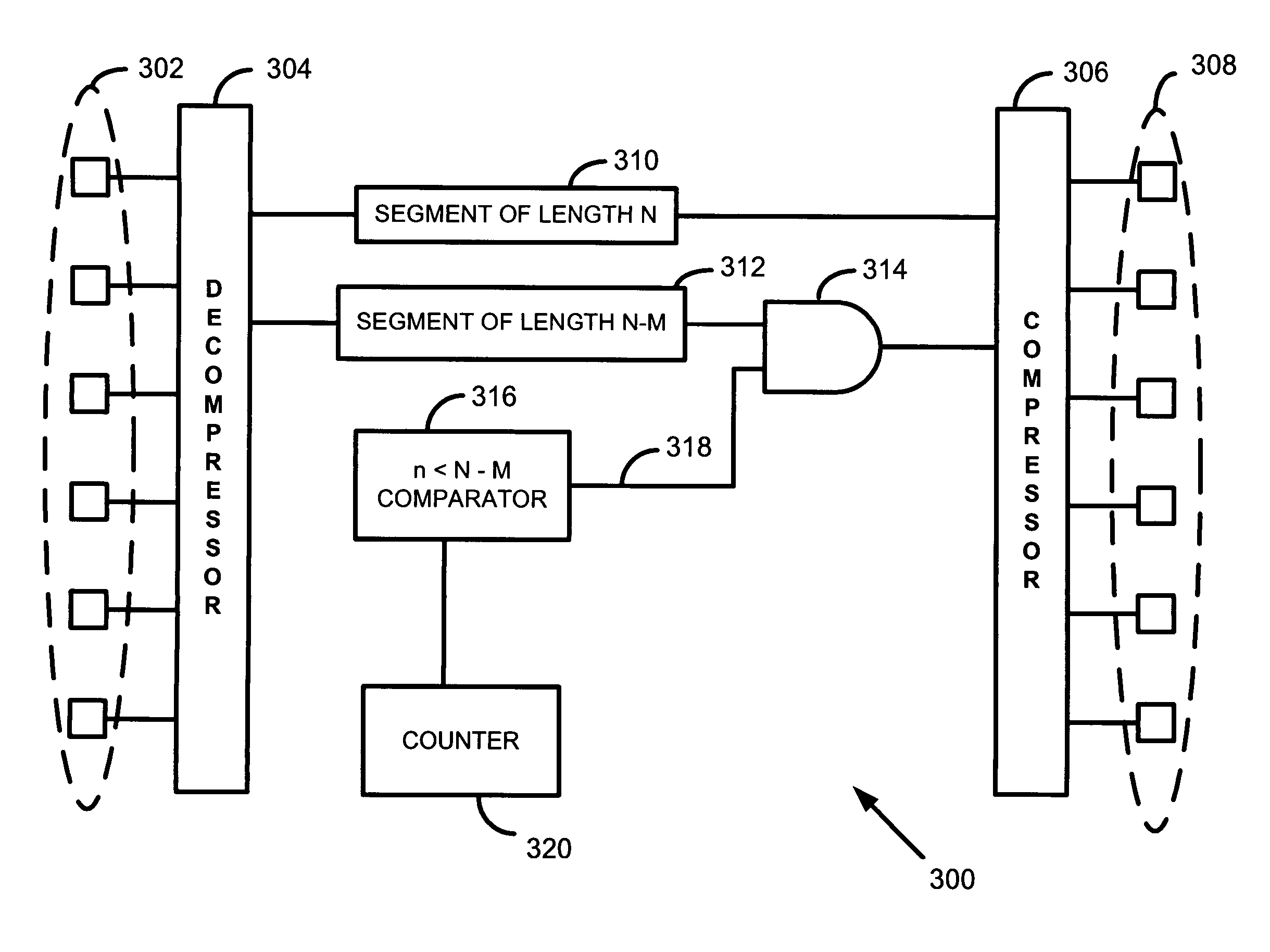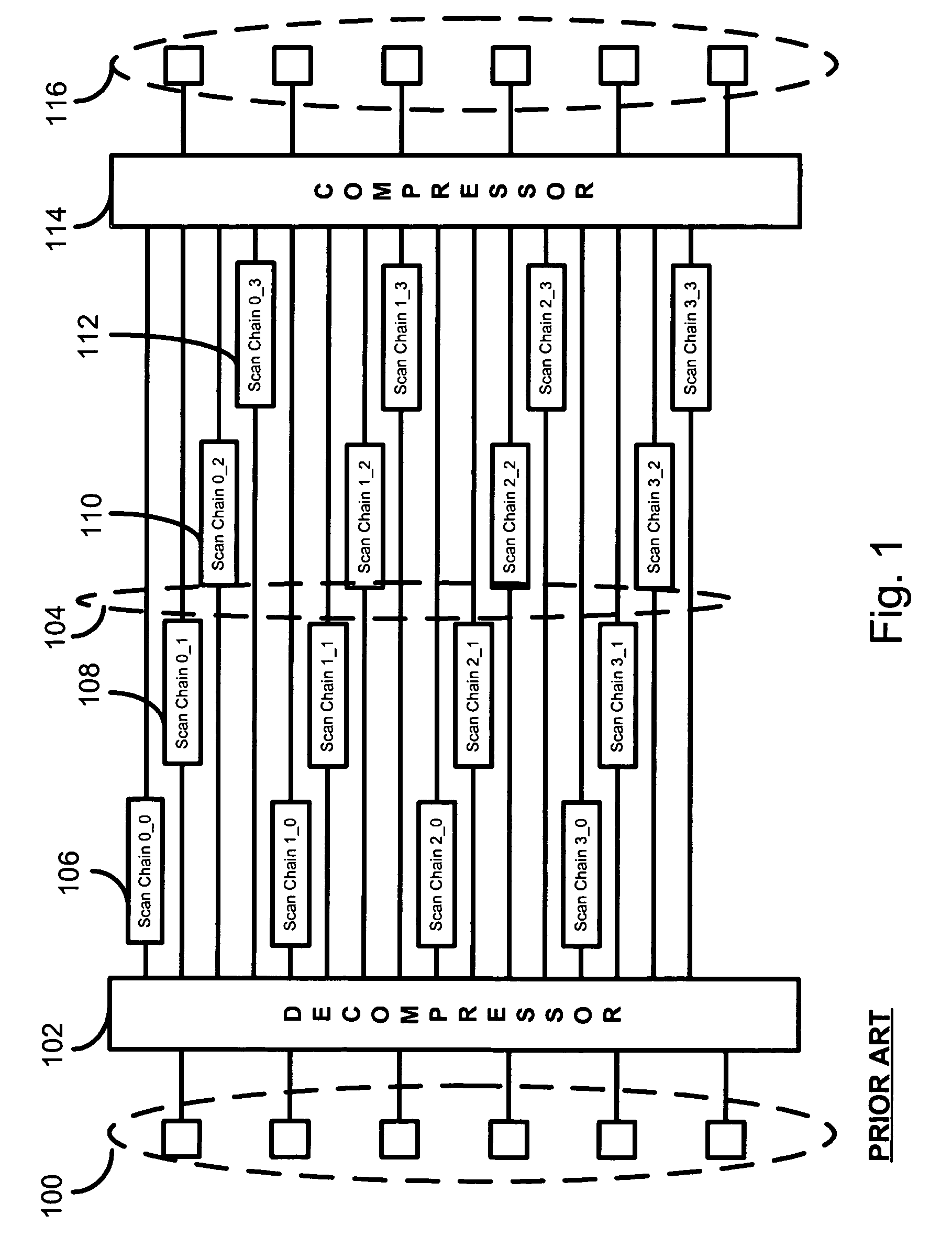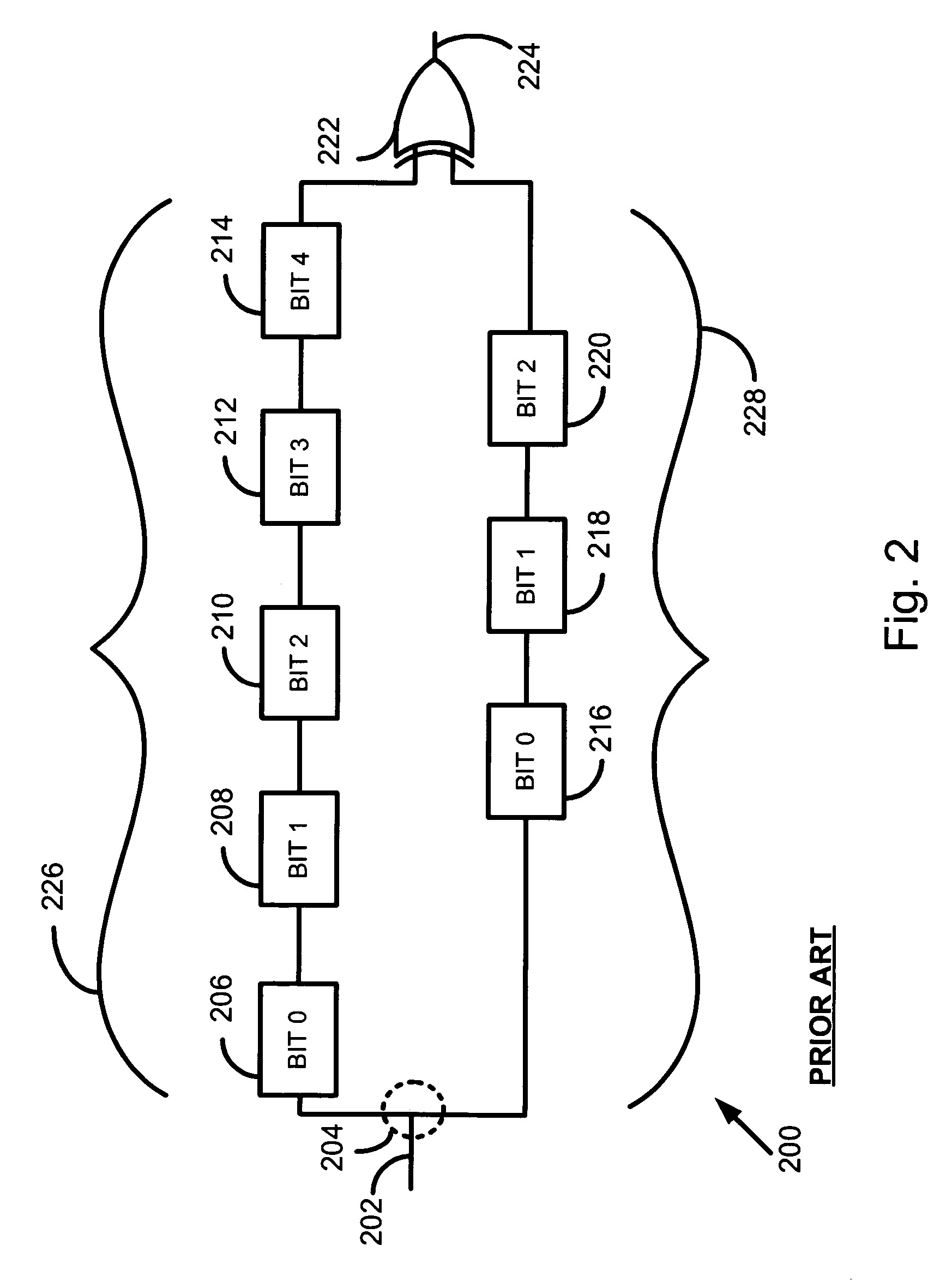System and method for automatic masking of compressed scan chains with unbalanced lengths
a compression scan chain and automatic masking technology, applied in the field of electronic system testing, can solve the problems of a large amount of data generated, less than 100% of the gates can be tested, and it takes a substantial amount of time to shift the test patterns into the scan chain
- Summary
- Abstract
- Description
- Claims
- Application Information
AI Technical Summary
Benefits of technology
Problems solved by technology
Method used
Image
Examples
fourth embodiment
[0061]In a fourth embodiment, comparators that program themselves may be implemented. The comparators may program themselves with the count during a learning phase or training sequence. Implementing comparators that program themselves would require a particular procedure to prepare the chip for testing. In one embodiment, a preparation process may be implemented as follows:[0062]A. Power up the chip. All the flip-flops are assumed to hold random values.[0063]B. Shift a sufficient number of zeros to be certain that all the flip-flops contain zero.[0064]C. Assert a “learning mode” signal, either directly from the outside world or through a TAP.[0065]D. Shift in a pattern of all ones. When each comparator sees a value of one appear at the end of the segment it is associated with, it stores the current value of the counter as the value to compare against, thus completing the training.
[0066]FIG. 4 displays a flow diagram of a method of operating a scan chain architecture including a sing...
second embodiment
[0078]In a second embodiment, M1=M2. In this variation, a single comparator is required, but two masking gates, one for each short chain, are required. The sequence is the same as for a single short segment, except after N−M shifts, the outputs of both short chains are masked off and the compressor 506 sees only zeros for those chains. This allows the sharing of the comparator logic. Otherwise, it is simply a degenerate case of the two short-chains example.
[0079]It should be appreciated that both variations of the two short scanchain segments can be combined to handle any number of short scan chains. For each short length (N−Mi), a comparator is required. For each chain of that length, a masking gate connected to the mask signal from that comparator is required.
[0080]A number of variations may be implemented using the scan chain architecture 500 or a variation of the scan chain architecture 500. A number of adaptive and / or learning comparators may be implemented in scan chain archit...
PUM
 Login to View More
Login to View More Abstract
Description
Claims
Application Information
 Login to View More
Login to View More - R&D
- Intellectual Property
- Life Sciences
- Materials
- Tech Scout
- Unparalleled Data Quality
- Higher Quality Content
- 60% Fewer Hallucinations
Browse by: Latest US Patents, China's latest patents, Technical Efficacy Thesaurus, Application Domain, Technology Topic, Popular Technical Reports.
© 2025 PatSnap. All rights reserved.Legal|Privacy policy|Modern Slavery Act Transparency Statement|Sitemap|About US| Contact US: help@patsnap.com



